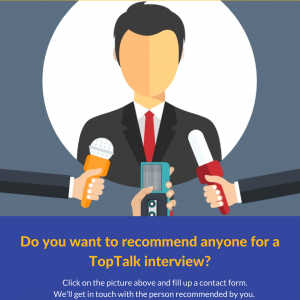 As an Agent In Engagement, Gregory F Simpson believes that an engaged workforce is the foundation of organizational success. He is on a mission to help companies AND their employees succeed.
As an Agent In Engagement, Gregory F Simpson believes that an engaged workforce is the foundation of organizational success. He is on a mission to help companies AND their employees succeed.
Whether in a corporate or consulting environment, he has created award-winning workplace experiences for people at all levels of Fortune 150 companies such as Accenture, State Farm Insurance Cos., Deutsche Bank, and Microsoft.
Recently, he was named to The Employee Engagement Awards 2018 #Engagement101 [https://ee-awards.com/engagement-101/ ] list of the top influencers & experts in the world of employee engagement.
Need to gather more intelligence?
LinkedIn: Gregory F Simpson dossier – https://www.linkedin.com/in/gregoryfsimpson/
Twitter: @AgtInEngagement – https://twitter.com/AgtInEngagement
Facebook: Agent In Engagement – https://www.facebook.com/AgentInEngagement/
Agent In Engagement blog – http://www.agentinengagement.com/blog/
What does employee engagement mean to you?
To engage our employees, we have to play the long game. Too often, companies opt for a quick fix by adding a perk, scheduling an employee appreciation day, etc. This is short-sighted. Employee engagement takes time and focus.
The company and its employees can succeed if they form an alliance in which the company focuses on its employees by investing in the development of their careers and networks and where employees focus on the success of the company by being actively committed to the organization and its goals.
If employees feel supported, recognized, and nurtured, then they’ll want to reciprocate by becoming more deeply involved in the success of the company.
How to measure employee engagement?
Most companies use annual or pulse surveys to measure and track employee engagement. They may analyze the results, eventually, present them, develop action plans, and from there the process slowly dies. Engagement is a moving target since it varies by an individual by day (and sometimes by the minute). Companies can’t rely on one source of information or looking at one period in time. Other measures should be considered in tandem with survey results. Examples would include and are not limited to:
- Employee turnover rate
- Employee referral activity
- Absenteeism
- Exit interviews
- Paid time off usage
- One-on-one conversations
- Sentiment analysis on company emails or social media posts
- Glassdoor feedback
What are the common causes of employee disengagement?
When I begin new projects, the first thing clients assume is that we will launch a survey. It is not where I like to start. There are plenty of companies publishing research on the state of employee engagement like Gallup, Mercer, and Bersin by Deloitte. If you read those reports, you’ll find some consistent topics (in order of importance):
- Employee-Manager Relationship
- Recognition and Rewards
- Growth and Development
- Advancement Opportunities
I prefer to address these topics BEFORE any surveys are administered. I want our employees to see that we are working to improve their workplace experience. By building a trusting relationship with our employees, we will receive more and more candid feedback once surveys are introduced.
What are the drivers of employee engagement in today’s fast-moving world?
Employee engagement is the outcome. A better way to think about it is to focus on the employee experience across the employee lifecycle. Each experience has the opportunity to engage or disengage an employee or group of employees. Companies need to identify ways in which they can reduce bureaucracy, simplify processes, allow greater input and autonomy, and reinforce purpose.
The first thing I would do is address the employee-manager relationship. “Gallup estimates that the manager accounts for at least 70% of the variance in employee engagement scores across business units.”1 Getting the right people in management roles would go a long way toward improving employee engagement. Keep in mind, that if a manager lacks the skills necessary to be effective in a management role, it is the company’s responsibility to identify other roles in the company where that manager’s skills can be leveraged because it was the company that placed the person in a role where they couldn’t be effective. Companies need to identify alternate career paths outside of the traditional management path.
1 Harter, Jim, and Brandon Rigoni. State of the American Manager: Analytics and Advice for Leaders. Rep. Washington, DC: Gallup, 2015. Print.
What makes a really effective employee engagement programme? Any best practices to share.
Part of the issue is that employee engagement is thought of as a program. Programs come and go and they benefit the company not necessarily the employee. Companies should incorporate an employee focus on everything they do. Again, it’s about creating a more meaningful, productive, and engaging workplace experience that provides current and future employees with compelling reasons to join, engage and stay with your company.

“The first thing I would do is address the employee-manager relationship. “Gallup estimates that the manager accounts for at least 70% of the variance in employee engagement scores across business units.” Therein lies the problem. What do you do if the managers and leaders are disengaged? People who focus on fixing EE/EX through HR have it all wrong. HR is almost never positioned to force leadership to change. WIth an HR-led Initiative, the employees get only what the politics, culture, and silos permit. Focusing on the managers is like trying to push a string. EE is an enterprise issue and every manager and leader has his or her own priorities and prejudices which will not be overcome by HR, notwithstanding how accomplished the CHRO is. It’s a matter of positioning, which explains the global lack of progress on EE and EX initiatives. If the CEO and a third party aren’t conducting the initiative then the trip isn’t worth taking. Try to find a single white paper, customer example, or even a company highlighting their delivered success in their marketing pieces, there are none. Better yet, find a company willing to put a major portion of their fees at risk pending the client’s assessment of the results. Compare the current worldwide results, to the following: https://chiefexecutive.net/employee-engagement-ceos-actually-listening/